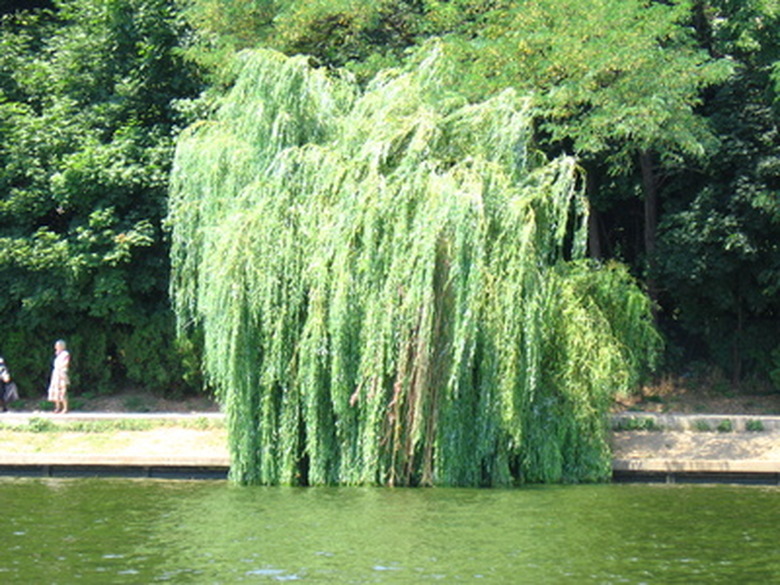How To Cut Back Willow Trees
There are many types of willow trees, including one of the most popular: the weeping willow. The willow family includes small shrubs as well as massive trees growing upward of 60 feet tall. Willows have distinctive bark, which is rough in appearance. Moisture is a willow's friend. They grow very well in moist environments, such as along the banks of rivers and ponds. Even though varieties may look different, the process of cutting back willow trees is the same.
Step 1
Prune willow branches that appear to be diseased or dying anytime of year. If you're not sure, make a nick in the branch. If it's green inside, it's still alive; if it's brown, it's dying. Cut branches off where they meet healthy wood.
- There are many types of willow trees, including one of the most popular: the weeping willow.
- Cut branches off where they meet healthy wood.
Step 2
Look over willow branches for signs of disease or rot. Removing these branches will keep the disease from spreading through the rest of the tree. Cut them within an inch of the healthy branch they connect to.
Step 3
Cut off low-hanging branches in late spring or early summer. Target those that are ruining the aesthetic appeal of the willow tree. Shape the tree to the desired form by cutting any branches that are growing in a wayward fashion. Because all branches on a weeping willow are low-hanging, trim them all to same length to keep them from brushing the ground.
- Look over willow branches for signs of disease or rot.
- Because all branches on a weeping willow are low-hanging, trim them all to same length to keep them from brushing the ground.
Step 4
Remove limbs and branches that are crowding each other within the willow tree's canopy. Look for those that are crossing or rubbing into one another. They are blocking air and sunlight from getting to the rest of the tree.
Step 5
Snip off suckers that grow around the base of the tree. These steal nutrients from the rest of the willow, preventing it from growing as much as it could. Cut them off as close to the ground as possible.
Step 6
Dispose of diseased wood by placing it in a plastic bag. Do not put it in a compost pile or you may cause the disease to spread.
- Remove limbs and branches that are crowding each other within the willow tree's canopy.
- Snip off suckers that grow around the base of the tree.
Tip
Use a pruning saw on thicker branches and pruning shears on thin, new growth.
Things Needed
- Pruning shears
- Pruning saw
- Ladder
